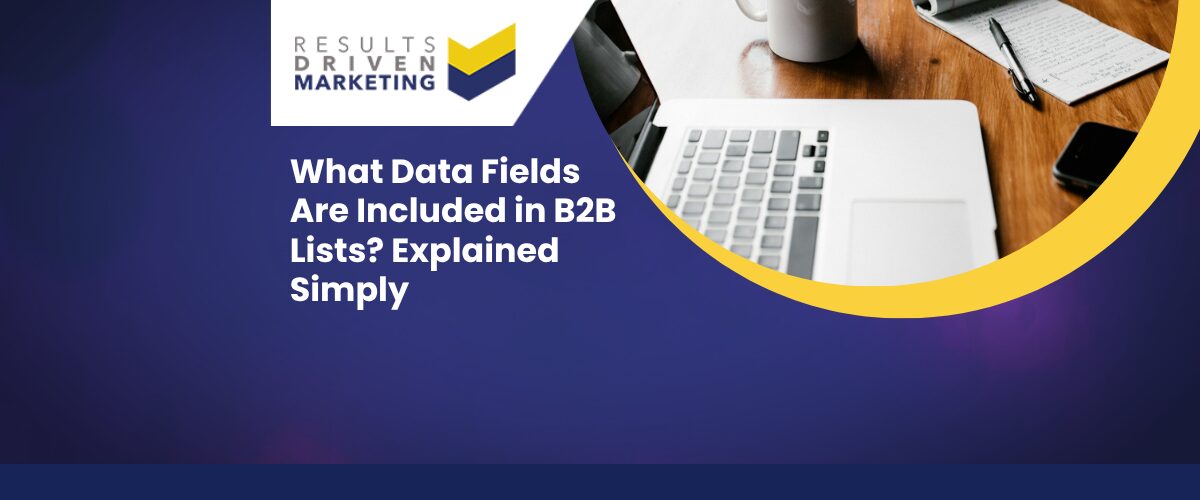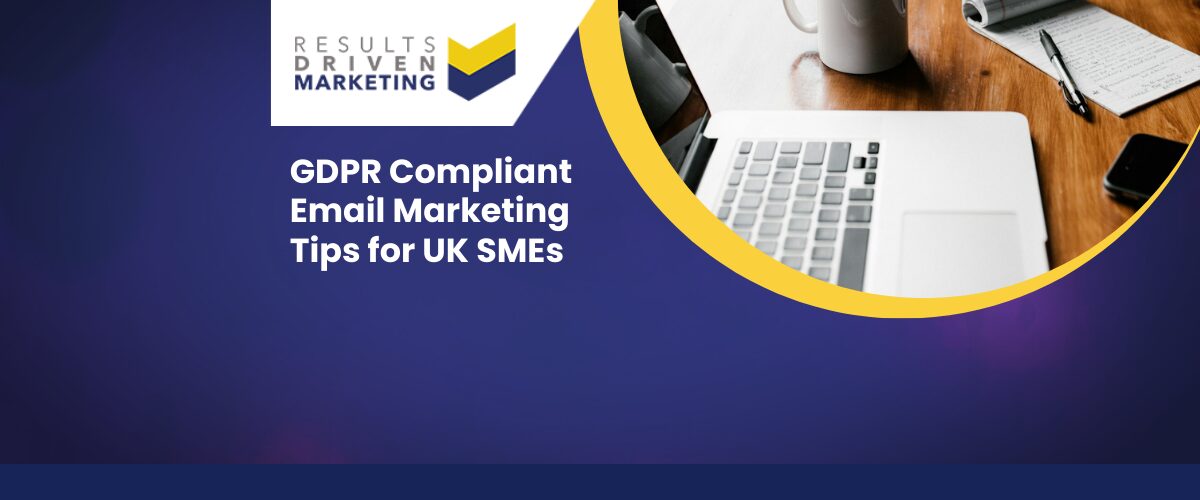
What Data Fields Are Included in B2B Lists? Explained Simply
What data fields are included in B2B lists? If you’re planning a campaign or considering buying business data, this is one of the first questions you should ask. After all, it’s not just about who you’re targeting — it’s about how you reach them, and how relevant that contact is to your offer.
For SME owners, sales teams, and marketers, the structure of a B2B list can make or break a campaign. Too many fields missing? Your team wastes time. Irrelevant contacts? Your message falls flat. But with the right fields — from job titles and sectors to region and company size — you can personalise your approach, stay compliant, and improve response rates across every channel.
In this post, we’ll break down the typical data fields included in B2B marketing lists, what they mean, and how to match them to your campaign goals. Clear, simple, and results-focused.
Table of contents:
Why Data Fields Matter in B2B Marketing
Relevance Is Everything in Cold Outreach
B2B outreach lives or dies by relevance. If your list includes the wrong people, outdated details, or missing fields, your message won’t land — and neither will your results. The more precise your data fields, the more likely you are to connect with the right decision-makers, at the right time, with the right message.
Data Fields = Targeting Power and Personalisation
Each field in a B2B list gives you a new lever to pull. Job title helps you tailor your pitch. Industry filters ensure your offer fits their world. Region allows you to add local relevance. When you combine multiple fields, you can segment smartly and personalise efficiently — two of the biggest drivers of response rates.
Poorly Structured Lists Waste Time and Reduce ROI
If your list lacks the fields you need — or they’re inconsistent or incomplete — your team ends up doing extra work just to get started. That’s time lost, budget wasted, and results delayed. A well-structured list, on the other hand, sets your campaign up for success from day one.
Core Contact Fields (Always Included)
Business Name, Address, Phone Number
At the bare minimum, every B2B list should include the company name, registered or trading address, and a contact number. These basics are essential for identification, direct mail campaigns, and establishing geographic relevance in your targeting.
Website and Company Registration Details
A company website adds legitimacy and helps your sales or marketing team do quick background research. Company registration numbers (when available) can be useful for validation, especially in sectors where trading history or business status is important.
Primary Contact Full Name and Job Title
This is where the targeting starts to come alive. A named decision-maker — ideally with job title and full name — helps personalise outreach and improve response rates. Job titles also allow you to filter by function or seniority, which is key for campaign alignment.
Campaign-Relevant Fields (for Targeting & Segmentation)
Job Function/Seniority (e.g. Director, Manager)
Job function allows you to tailor your message to the right level of authority. Whether you’re targeting decision-makers like Managing Directors, Marketing Managers, or Operations Heads, this field helps you focus your message — and your resources — where they matter most.
Industry Sector (SIC/NAICS Codes or Plain-English)
Sector targeting is vital for relevance. Whether listed by SIC/NAICS codes or standard industry labels, knowing the sector allows you to speak your prospect’s language. This is especially useful for niche offers or campaigns that rely on industry-specific pain points.
Company Size (Employee Range, Turnover Brackets)
Larger firms have different needs — and buying power — than micro businesses. Company size fields (usually shown as employee ranges or turnover bands) help you filter accordingly. It also lets you align your campaign tone, offer, and pricing model to suit.
Region/Postcode Filtering for Local Targeting
If your product or service is regional or you want to prioritise certain territories, postcode and region fields are a must. This data enables localised campaigns, sales territory planning, and travel-efficient call routing for field sales teams.
Channels & Delivery Fields
Telephone Numbers (Mainline vs Direct Dials)
Most B2B lists include at least one phone number — typically a main switchboard line. Some also include direct dials, which are especially valuable for speeding up telemarketing campaigns and avoiding gatekeepers. Knowing which type is included helps with script planning and call flow.
Email Fields (General vs Named Contacts)
Email data usually comes in two forms: generic inboxes (e.g., info@, sales@) or named contact emails. Named contacts are more effective for personalised outreach and often generate better engagement. Either way, having a usable email field is essential for email campaigns — especially when combined with other targeting fields.
Postal Address Formatting (for Direct Mail)
For postal campaigns, address formatting matters. A clean list should include full, correctly segmented address fields (line 1, line 2, town, postcode) to enable personalised printing and bulk mail sorting. Poor formatting here can result in failed delivery and higher print/mailing costs.
Optional or Add-On Fields
LinkedIn URLs, Company Social Profiles (Optional)
Some B2B data suppliers include social profile links — most commonly LinkedIn URLs for individual contacts or company pages. These are great for pre-call research, social selling, or enriching your CRM, but they’re not always standard.
Decision-Maker Count or Department Breakdown (If Available)
For larger companies, knowing how many decision-makers are in a department — or having a breakdown by function (e.g., finance, marketing, HR) — adds another layer of precision to your outreach. This is particularly useful for campaigns that involve complex products or multiple stakeholders.
Trading Style, Years in Business
These niche filters help you refine your audience further. For example, you might want to exclude start-ups or only target long-established companies. Trading style (Ltd, LLP, PLC, sole trader) can also affect how your messaging lands — and whether they’re likely to be decision-ready.
Matching Fields to Your Marketing Goals
Which Fields Matter Most for Phone Campaigns
For telemarketing, priority fields include contact name, job title, direct dial if available, and company size or sector for script relevance. Region and postcode fields help with territory management or if you’re calling by location.
What Email Marketers Should Focus On
For email campaigns, the key fields are email address (preferably named contact), job function, industry, and business size. These allow for effective segmentation, dynamic personalisation, and tailored messaging that speaks to the prospect’s role and business context.
What to Prioritise for Local or Industry-Specific Campaigns
If you’re running a local campaign — say, to promote a regional event or service — make sure your list includes accurate postcode and region filters. For industry-specific offers, sector classification is critical. Pair that with job titles to ensure you’re reaching the right person within the right type of business.
What to Ask Your Supplier Before Buying
Clarify Exactly What’s Included — Don’t Assume
Not all B2B lists are created equal. Always ask for a breakdown of the fields included — company name, contact details, job titles, segmentation options, etc. If it’s not clear, ask. If they can’t tell you, it’s a red flag.
Request a Sample Layout or Count Before Purchase
A quick sample layout (with dummy data) lets you see how the list is structured and whether it matches your campaign needs. You can also request a count report based on your filters — giving you a sense of volume before committing.
Confirm Segmentation Options Based on Your Goals
Tell your supplier your targeting goals — sector, job role, region, company size — and ask what they can filter by. The more tailored the list, the better your results. Good suppliers won’t just sell you data; they’ll guide you to the right fit.
Why Choose Results Driven Marketing?
We Tailor Every List by Industry, Job Role, Size, and More
At Results Driven Marketing, we don’t do one-size-fits-all. Every list we build is based on your specific brief — whether that’s targeting owners in construction, finance leads in tech, or decision-makers in your local area.
All Data Checked for CTPS and Formatting Accuracy
Before delivery, your list is screened against the CTPS and formatted for easy use in your CRM or marketing tools. No messy data. No compliance risks. Just clean, campaign-ready records you can use with confidence.
Transparent Breakdown of What You’ll Receive — No Surprises
You’ll always know what fields are included before you buy. We’ll show you the count, layout, and breakdown — and explain what each part means so you’re never in the dark.
Advice That Puts Your Campaign Goals First, Not the Sale
We’re not here to upsell — we’re here to help. If we think a smaller list will perform better, we’ll tell you. If your targeting needs refining, we’ll guide you. Your results matter more than our sales volume.
Final Thoughts: Build Better Campaigns with Better Data
Don’t Just Buy Contacts — Buy Strategy-Aligned Data
A list is only as good as its structure. When your data fields align with your campaign goals, everything clicks — from segmentation and scripting to personalisation and follow-up. Don’t settle for generic lists when tailored data delivers far more.
The Right Fields Boost Efficiency, Compliance, and Conversion
Accurate, well-segmented fields mean less time cleaning data, fewer wasted contacts, and a smoother run from start to results. With the right fields, your team works smarter — and your campaigns perform stronger.
Know What to Look For, and You’ll Get Better Results
When you know what data fields are included in B2B lists — and which ones to ask for — you’re in control. You’ll brief better, buy smarter, and launch more effective marketing and sales campaigns.
Want Help Choosing the Right Data for Your Campaign?
-
Contact us for a tailored list count
-
Get clear on the fields that matter for your next campaign
-
Buy email lists aligned with your outreach strategy
About Results Driven Marketing
Results Driven Marketing helps UK SMEs succeed with high-quality, CTPS-checked B2B data tailored to their exact needs. We combine industry expertise, honest advice, and fast turnaround to help your campaigns hit the mark — every time.
📞 0191 406 6399
📍 Based in Newcastle (Cobalt Business Exchange)
🌐 rdmarketing.co.uk





